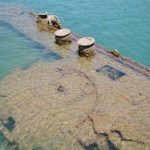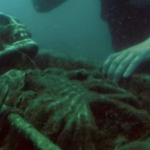Exceptionally Preserved 800-Year-Old Gold Necklace Among Abundance of Artifacts Recovered from a Song Dynasty Shipwreck After Millennia Submerged in the Ocean
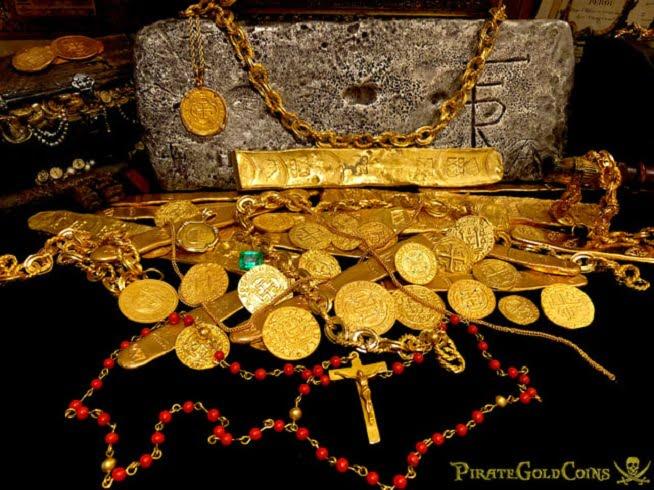
Two exquisite and amazingly-preserved gold necklaces found in an 800-year-old shipwreck have been put on display in the Guangdong Museum, China, along with various other artefacts from the Song Dynasty.

The vessel, dubbed the Nanhai I, was first discovered by a joint Chinese-British diving expedition in 1987 — although it would take another two decades before the vessel could be safely raised to the surface for study.
The goods-laden trader is China’s largest and oldest known wrecked ship, which had been travelling out of China towards the Indian Ocean along the ‘Maritime Silk Road’ when it went under close to the shore.
Scroll down for video
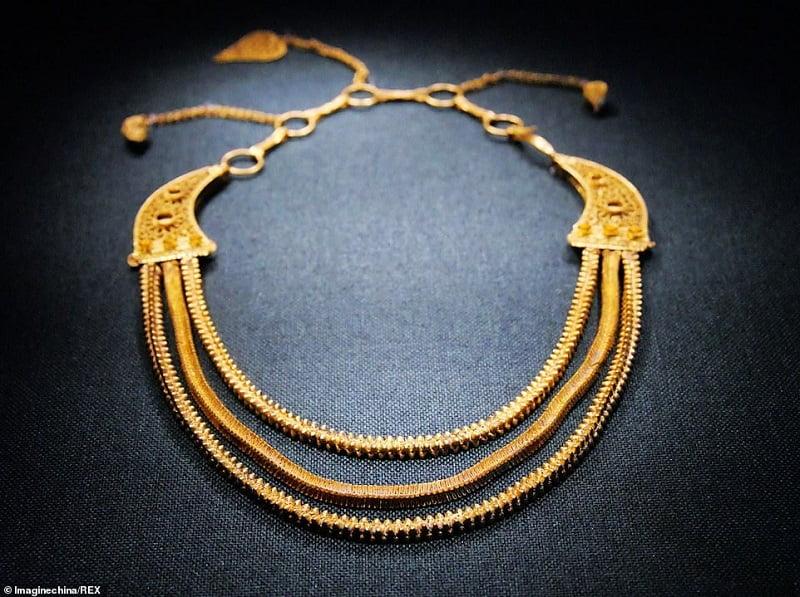
Two exquisite and amazingly-preserved gold necklaces found in an 800-year-old shipwreck have been put on display in the Guangdong Museum, China, along with varied other artefacts from the Song Dynasty
The necklaces are featuring in the recently-opened exhibition ‘The Route of the Sea: Nanhai I shipwreck and Maritime Trade in the Southern Song Dynasty’, which is being presented at the Guangdong Museum in Guangzhou, China.
The shipwreck of the Nanhai I — which translates as ‘South China Sea 1’ — was first discovered by a Chinese–British diving team in the South China Sea off of the coast of Shangchuan Island, in Guangdong province, in the August of 1987.
The vessel’s remains are one of China’s largest and oldest known shipwrecks, dating back to the time of the Song Dynasty which lasted from 960–1279 AD.
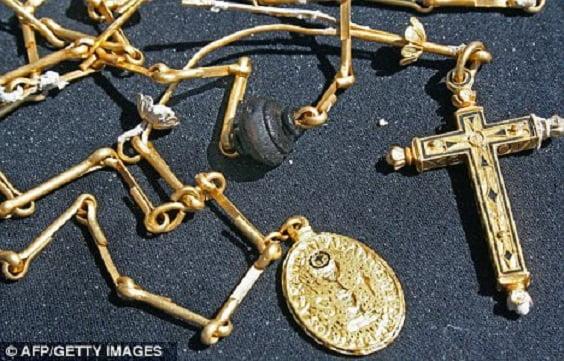
The divers had been searching for a sunken Dutch East India Company craft, the Rimsburge, when they stumbled across the other sunken ship.
‘The most likely scenario is that the ship was overloaded. Or it perished in a storm,’ Director of the Chinese Institute of Underwater Archaeology Jiang Bo told the UNESCO Courier.
The extremely well preserved ancient ship was an ocean-going merchant vessel with a large hull capacity, at around 72 feet (22 metres) long and about 30 feet (9 metres) wide.
Sun Jian, technical director of the Underwater Cultural Heritage Protection Centre, told the Hindu that the Nanhai I was ‘a short and fat model that was widely used in ancient times, designed with high safety standards, a good ability to resist waves and a big freight load.’
Despite the wreck having lain on the sea bed buried under sludge for around eight centuries, the hull of the Nanhai I maintained its integrity, preserving tens of thousands of ancient relics in its hold.
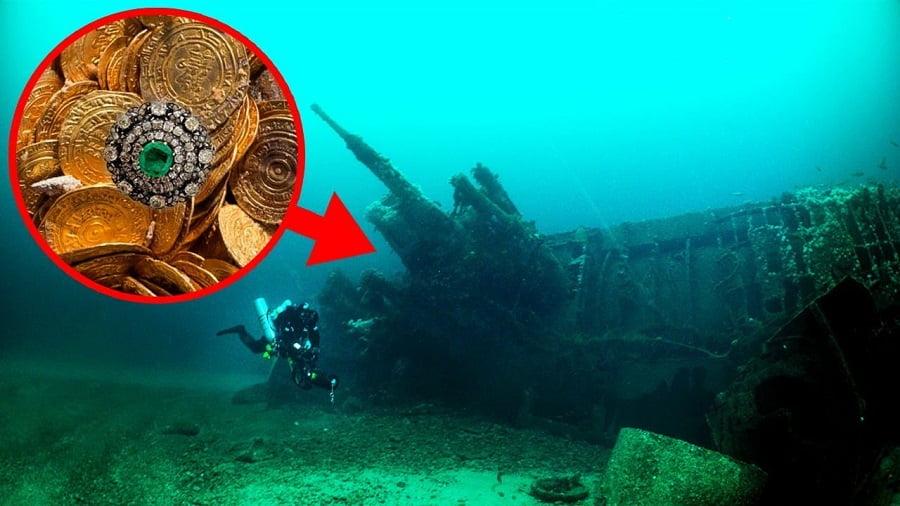
While the vessel was only submerged to a depth of 75 feet (23 metres), the extend of the finds and the murky waters made the recovery of the ship and its cargo challenging.
The original joint diving mission that discovered the wreck had tried at the time to recover objects from the sea bed and, while they were successful in lifting some items, they accidentally destroyed the rear of the vessel in the process.
Fortunately, the Nanhai I’s location close to the Chinese coastline protected it from pillaging until the vessel could be more carefully recovered.
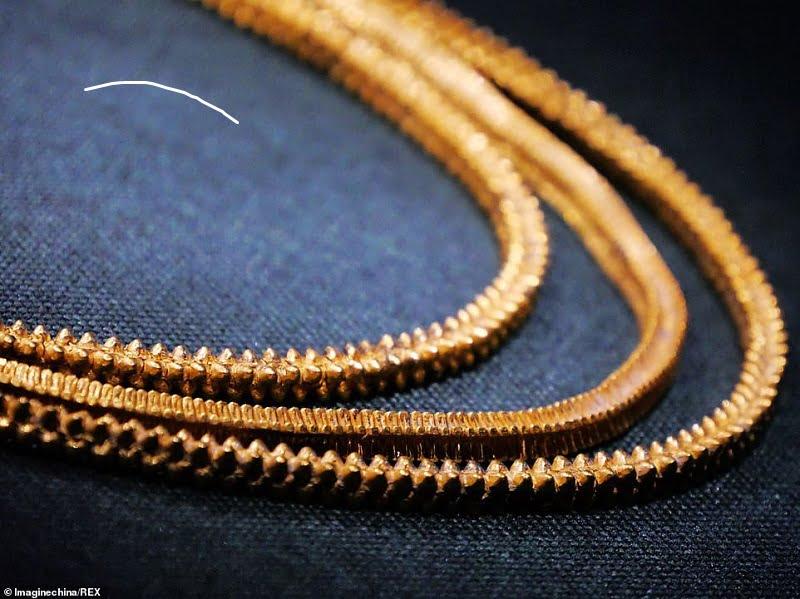
The vessel, dubbed the Nanhai I, was first discovered by a joint Chinese-British diving expedition in 1987 — although it would take another two decades before the vessel could be safely raised to the surface for study
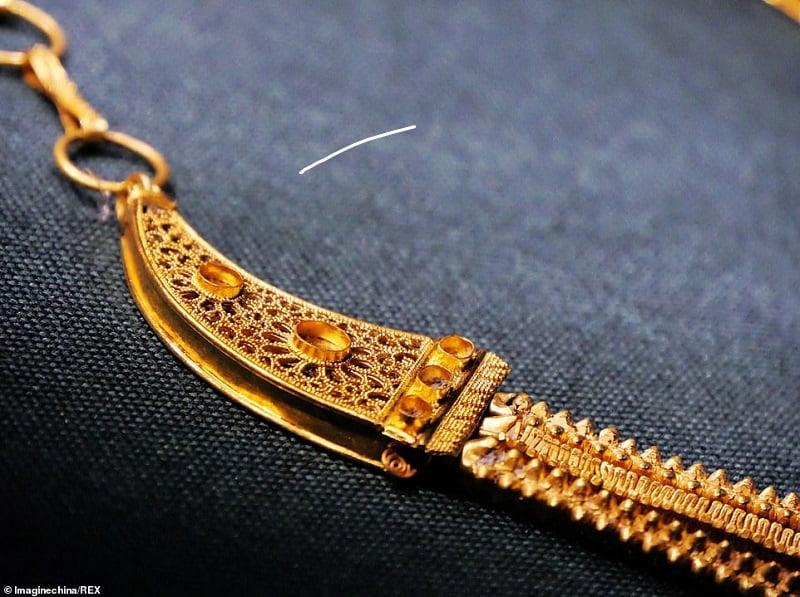
The goods-laden trader is China’s largest and oldest known wrecked ship, which had been travelling out of China towards the Indian Ocean along the ‘Maritime Silk Road’ when it went under close to the shore
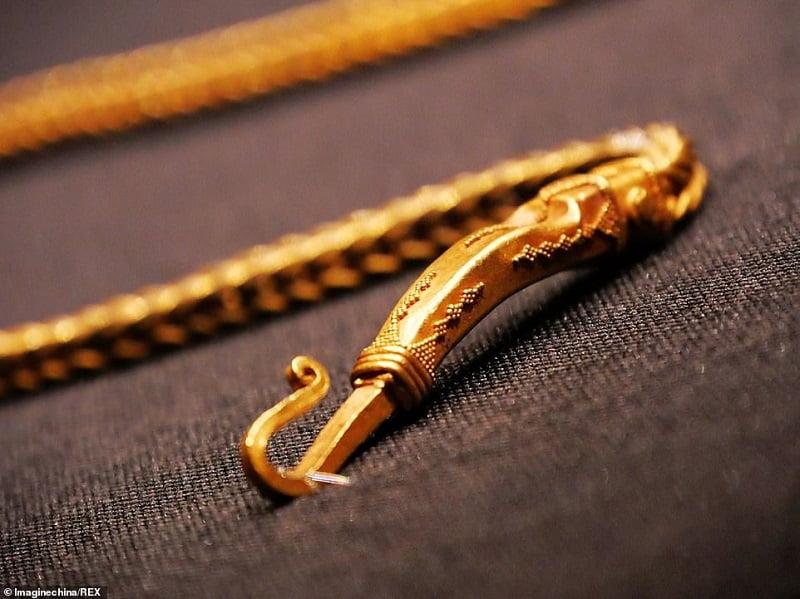
The necklaces are featuring in the recently-opened exhibition ‘The Route of the Sea: Nanhai I shipwreck and Maritime Trade in the Southern Song Dynasty’, which is being presented at the Guangdong Museum in Guangzhou, China
Following nine months of preparation, the entire shipwreck was lifted off of the seabed on December 21, 2007 and transferred into the specially-built Guangdong Maritime Silk Road Museum on Hailing Island, Guangdong.
The ancient vessel is kept in a gigantic aquarium, the environment inside which is set to replicate the exact water temperature and quality as the surroundings on the sea floor where the ship was discovered.

The painstaking extraction was performed using a 5,500 ton watertight case, large enough to contain the whole shipwreck, which was pressed down into the seabed around the wreck before the surrounding mud was cleared away and a base inserted.
The operation, conducted by the Chinese State Administration of Cultural Heritage and Transport Department, cost around $20 million (£16 million).
Not only have the Nanhai I and its contents been preserved in the Maritime Silk Road Museum, but visitors to the complex have been able to observe the excavations of the raised vessel in real-time as they are undertaken in the museum’s glass-fronted ‘crystal palace’.

Following nine months of preparation, the entire shipwreck was lifted off of the seabed on December 21, 2007 and transferred into the specially-built Guangdong Maritime Silk Road Museum on Hailing Island, Guangdong (pictured)









